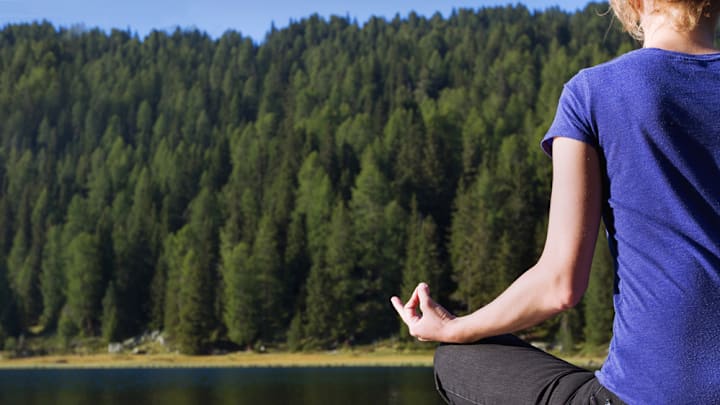The Power of Stillness: Why Doing Nothing Might Be the Healthiest Thing You Do All Day

In a world obsessed with hustle, reps, movement streaks, and progress charts, stillness feels like the enemy. Something reserved for exhaustion or failure. Something that only happens after the work is done.
But stillness isn’t the absence of movement.
It’s a different kind of movement. One that happens inside your body, your nervous system, your mind. And when practiced with intention, stillness isn’t passive—it’s powerful.
In fact, it might be the most radical health decision you make all day.
Your Body Isn’t Meant to Go Nonstop
Let’s get real—humans aren’t machines. Yet we treat our bodies like engines that just need better fuel and a tighter schedule. We cram in workouts, rush our meals, and then wonder why we crash, unfocused and fatigued.
Here’s what we forget: your body has two modes. Fight-or-flight (action, stress, go) and rest-and-digest (healing, repair, reset).
Most of us live in the first one. And we wonder why the second feels out of reach.
Stillness flips the switch. It’s the key to activating your parasympathetic nervous system. The mode that restores. Regulates. Rebuilds. It’s not lazy. It’s life-supportive.
Stillness Is Not the Same as Stopping
Stopping is scrolling for 45 minutes without realizing it. It’s zoning out in front of a screen. It’s unconscious inertia.
Stillness is the opposite. It’s presence.
Try sitting still, eyes closed, no agenda. Listen to your breath. Feel your heartbeat. Count five sounds around you. Do nothing else.
You’ll notice how loud your thoughts get. How quickly your fingers want to check your phone. How your body squirms for distraction.
That’s not failure. That’s detox. You’re peeling back the overstimulation.
Stillness doesn’t mean silence. It means meeting what’s already there, without running from it.
Your Muscles Remember the Pause
Physically, the body thrives on cycles of tension and release. In yoga, there’s savasana. In weightlifting, the rest between sets. In life, there’s sleep.
But in your day? Where’s the rest?
We stretch, train, move—but rarely allow time for the body to absorb that movement. Stillness allows your fascia to rehydrate, your breath to deepen, your energy to recalibrate. It’s like hitting “Save” on all the work your body just did.
No rest = no integration.
And without integration, progress plateaus.
Stillness is Strength Training for the Mind
Mentally, stillness is resistance training. You’re building the muscle of non-reactivity. The ability to feel something—boredom, anxiety, a craving—and not immediately respond.
In that space? Power lives.
This isn’t about detachment. It’s about witnessing without losing your footing. Athletes call it mental composure. Meditators call it equanimity. We can just call it clarity.
Stillness teaches you that you are not your impulses. You are the space that holds them.
How to Build a Stillness Practice (Without Overthinking It)
No rituals. No apps. No pressure. Just simple, repeatable moments:
Two minutes after waking: Sit on the edge of your bed. Breathe. Let your eyes stay soft. No phone.
Five minutes after your workout: Lie flat. Eyes closed. Feel your heartbeat slow down.
One minute before a meal: Sit. No devices. Let your body catch up to your hunger.
Ten breaths before sleep: Inhale. Pause. Exhale longer than you think you need to.
That’s it. Stillness in motion. Integrated, not added.
In a culture that demands constant doing, stillness is rebellion.
It’s choosing depth over speed. Presence over productivity. Integration over overload.
So don’t just stretch your body—stretch your pauses. Widen the spaces between the noise. Sit inside the quiet until it starts to speak.
Because sometimes, doing nothing… does everything.